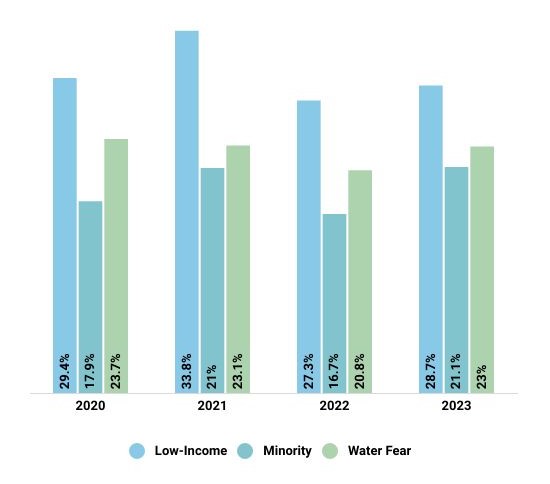The USA Swimming Foundation reports that just one month of formal swimming lessons reduces the risk of drowning by 88%, making learn-to-swim programs an essential foundation for all aquatic activities. There are many factors that have an influence on whether someone learns to swim or not, including whether their parents learned to swim, socioeconomic status and more.
making learn-to-swim programs an essential foundation for all aquatic activities. There are many factors that have an influence on whether someone learns to swim or not, including whether their parents learned to swim, socioeconomic status and more.
A 2017 USA Swimming report found that 79% of children in low-income families have little to no swimming ability, and 64% of black children, and 45% of Hispanic children have little to no swimming ability, compared with 40% of white children. Various grants and programs across the country have made it their mission to remove the barriers to learn-to-swim program for minority and low-income communities. In addition, there are programs that aim to work with people who have a fear of the water, helping them overcome their phobias and learn to swim.
The number of respondents to the Aquatic Trends survey who are involved in these types of outreach programs has remained relatively consistent over the past few years. In 2023, 28.7% of respondents said they were involved in outreach to low-income patrons, up from 27.3% in 2022. Another 21.1% are engaged in minority outreach, up from 16.7% in 2022. And 23% said they offer learn-to-swim programs designed to help people overcome their fear of the water, up from 20.8% in 2022.
Click for more Industry Research from Recreation Management.


